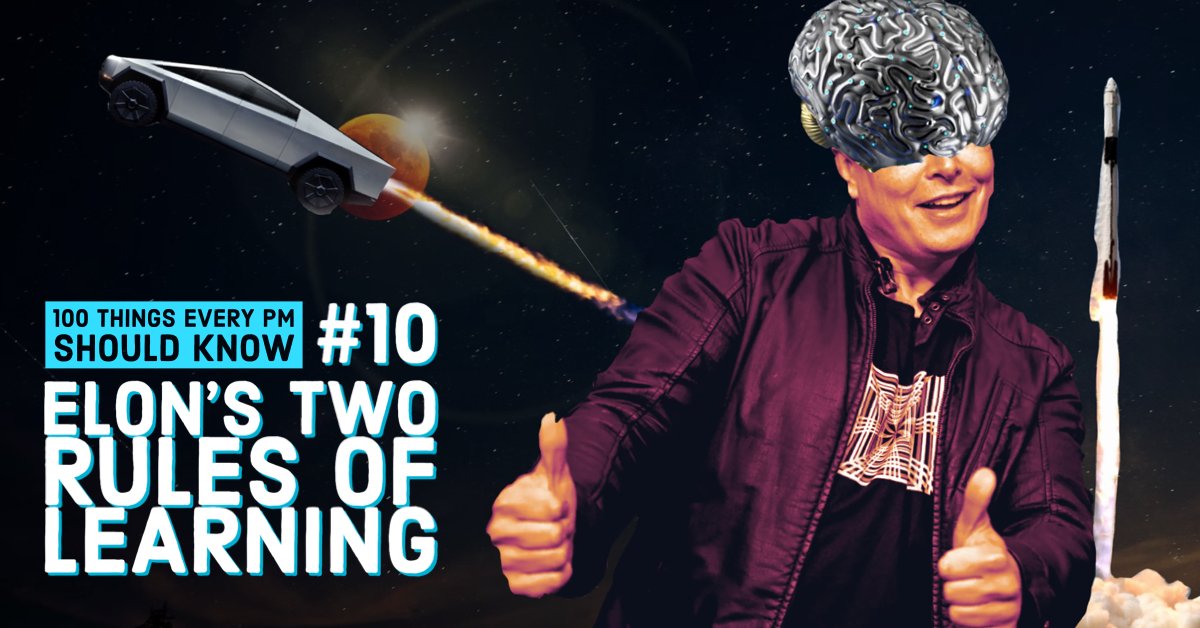#10–Elon Musk's 2 Rules for Learning
Product Managers exist is a world that is constantly changing. Every month there are new features to compete with, tools to use, and breakthroughs to consider. In this type of environment, learning quickly becomes critical. However, the nature of the Internet means that information is plentiful but not organized. This can create the illusion of learning (i.e. we’re exposed to lots of information) but without the understanding (i.e. we don’t know how it fits together and therefore can’t use it). For information to be usable it must be paired with understanding. Otherwise it just makes us great dinner party guests.
The many areas that affect a product – all of which a Product Manager must understand.
In a Reddit AMA, Elon Musk was asked if he had a process for learning. He answered with two simple rules that he uses.
Rule #1 — Make sure you’re building a tree of knowledge
“Make sure you understand the fundamental principles, i.e. the trunk and big branches, before you get into the leaves/details or there is nothing for them to hang on to." — Elon Musk
Thinking of each leaf as a piece of information and the tree as the organizing structure is a great metaphor. It makes it really easy to see that the Internet is like standing in a leaf storm – all kinds of small details flying around without context. The Internet provides no trees, just leaves. We must plant and grow the tree ourselves.
The way to do that is to think about the system (trunk and branches) before getting into the details (the leaves). Take a rocket for example. If you wanted to learn about rockets you would break things down into the systems that make one up: structure, fuel, engines, and guidance. You might also ask, “What things outside the rocket system can affect it?” That would identify other systems you needed to study, like gravity (physics), air resistance (atmosphere), business models (government funding), etc. So your trunk of launching a rocket has all these other branches of areas that need to be understood. With that diagram in place, you can start to get into the details of each one, making sure not to go too deep into any single one and neglecting others.
A good Product Manager doesn’t need to understand the smallest minutiae of each system but they do need to understand the larger concepts and how everything fits together.
A poorly drawn tree of knowledge to illustrate the point.
Rule #2 – Make connections to the world as you know it
The “as you know it” part is key. You can’t remember what you can’t connect. If there are no connections to what you already know, the information is like leaves on the ground, easily blown away.
One way to do this is ask yourself, “Why am I learning this?” What is the problem in your work the learning will be applied to. Thinking about a goal you’re trying to achieve helps you focus your attention on the most relevant parts and makes it meaningful.
Another way is to ask yourself, “What do I know already?” From there you can identify some parts you don’t know. For example, you might know that rockets were once funded and built by the government (NASA) but are now made by private companies like SpaceX. This piece of known information can be connected to new understanding of the business side of rockets and how it’s changed.
Using these two simple rules lets you step out of the windstorm of information on the Internet and be more deliberate about your learning. It also encourages a longer term view of learning, as something that must be nurtured and grown over time, like a tree.



